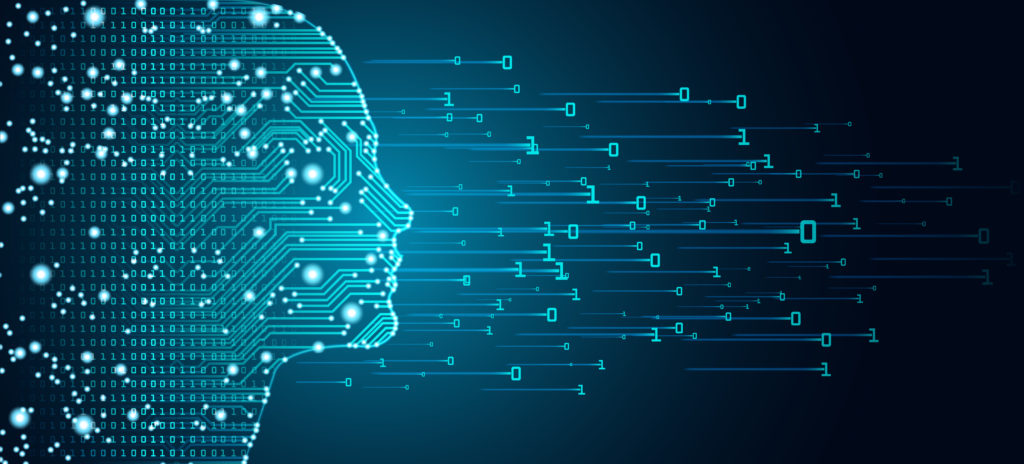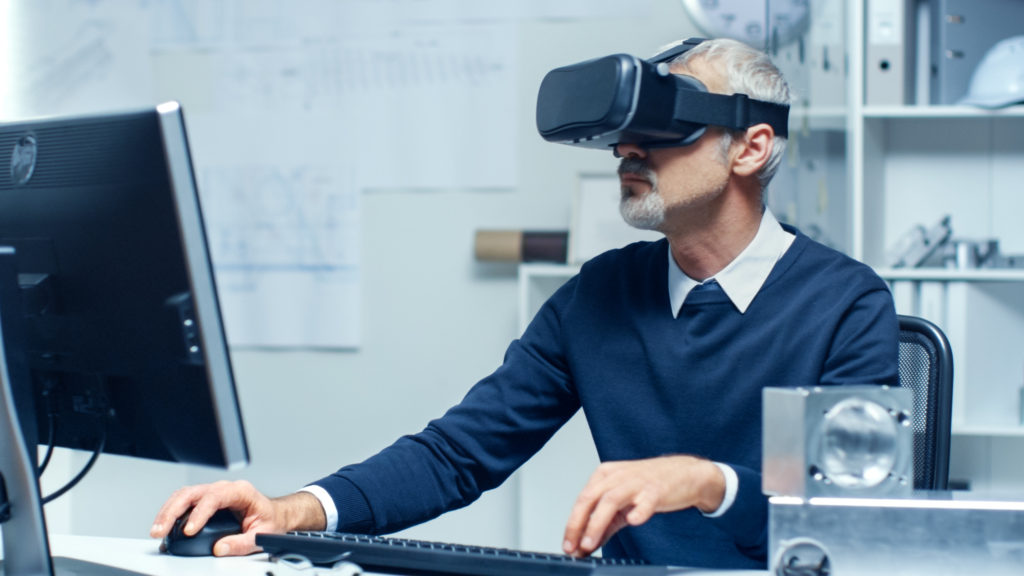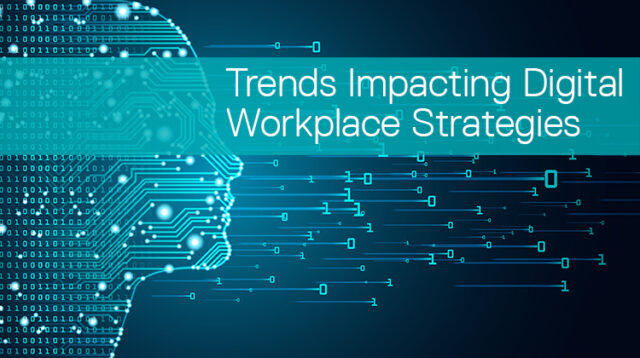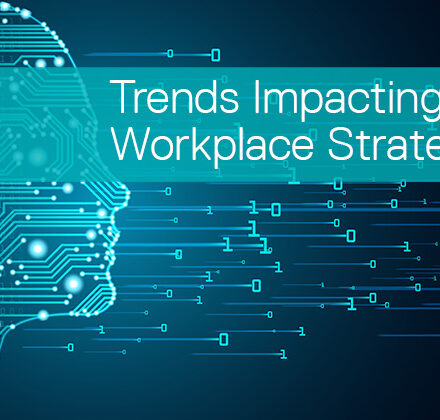Technologies such as machine learning, bots, virtual personal assistants, augmented reality and virtual reality are being leveraged in the consumer world to enrich experiences and adapt based on preferences and behaviors. Organizations likely already have teams and solutions in place for things like digital workplace portals, unified communications, content management, etc. However, there are emerging technologies in the consumer world that are already starting to make their way into the enterprise workplace. Some of these are quickly gaining maturity in their application for real-world use cases while others are at the beginning of the adoption curve. Let’s explore some of the use cases and target scenarios where these technologies are being applied.
Machine Learning
The self-driving car is all about writing software to teach the car how to drive itself. Underpinning that is machine learning based upon telemetry provided by sensors and cameras. The smart thermostat uses machine learning and sensors to determine when you’re home and when you’re not to set the desired temperature for your house.
 So how can this be applied in the enterprise? Machine learning is one of the most broadly applicable technologies that can be applied to almost anything. Within enterprise organizations, machine learning techniques are being embedded in apps and platforms – promising to make them smarter and more relevant to workers. For example:
So how can this be applied in the enterprise? Machine learning is one of the most broadly applicable technologies that can be applied to almost anything. Within enterprise organizations, machine learning techniques are being embedded in apps and platforms – promising to make them smarter and more relevant to workers. For example:
- Dell Client Command Suite proactively provides personalized suggestions and recommendations based upon an individuals’ (and their colleagues’) interactions and behaviors in the context of Microsoft Office 365.
- Dell Client Command Suite uses machine learning to notice patterns of problems that workers are facing with their PCs to help improve support and over time deliver self-healing.
- Big Data – The collection, storage, processing, and analysis of the organizations’ data is at the heart of Machine Learning. These machines can only learn if there are mountains of data to analyze so patterns can be determined, and actions can be taken.
Bots
Bots have become prevalent in the consumer world, most notably in the messaging and chat industry. We now see most major companies deploying bots to represent their brand and interact with consumers directly within chat platforms such as Apple iMessage, Facebook Messenger, SnapChat and others.
 Organizations are looking at bots and robotic process automation for areas such as knowledge management, application integration and personal productivity boosters. Bots range from the mundane “if this, then do that” to the more complex with the ability to answer questions from integrated platforms (HR, CRM, ERP, etc.) on demand. Some bots even do these things automatically, without the worker asking for the information.
Organizations are looking at bots and robotic process automation for areas such as knowledge management, application integration and personal productivity boosters. Bots range from the mundane “if this, then do that” to the more complex with the ability to answer questions from integrated platforms (HR, CRM, ERP, etc.) on demand. Some bots even do these things automatically, without the worker asking for the information.
- Travel and Expense Support – When a charge hits a workers corporate card, a bot could create a corresponding expense report and entry item.
- Desktop Support – Bots that attempt to answer and solve problems for workers, using machine learning and available support content.
- Microsoft Teams – Workers can leverage bots to retrieve data, tasks and notifications from a variety of platforms and in turn make business decisions on where to focus their time.
- Microsoft Dynamics 365 for Sales and Customer Service – Customer service departments can utilize bots to deflect routine questions, promote self-service and free up agents to focus on areas where they are more effective.
Virtual Personal Assistants (VPAs)
In the consumer world, Amazon, Google and Apple, among others, all create voice enabled smart home devices that allow us to control our homes through voice activated commands. Apple, Google and Microsoft have had virtual personal assistants embedded in our devices and operating systems for years that similarly allow us to control those devices and accomplish tasks such as researching questions on the internet, making a call, sending a messaging, etc. Consumers use VPAs in their personal lives to answer questions, accomplish tasks and control the environment.
VPAs are an emerging technology for enterprise organizations. The enterprise workforce wants a consumer-like experience at work. They want the same capabilities and more, such as accomplish tasks, manage priorities, and control their surroundings. They’d like voice capabilities in their workplace for issuing commands and making suggestions to help them find information. Organizations are connecting their key content platforms with VPAs to accelerate the speed and ease which workers can access enterprise data and content (CRM, ERP, intranet, HR). Some examples are:
- A worker could use the Cortana VPA within Microsoft Windows 10 to ask her to retrieve the latest travel expense and policy document. In this case Cortana would have to be connected to the organizations intranet or HR portal to be able to retrieve that on behalf of the worker. The benefit should be obvious – the worker wasn’t required to launch a browser and navigate to a portal, they simply had to ask a question.
- Workers could use the Siri VPA on an iPhone to tell them when their next meeting is scheduled and what the meeting is about.
- Organizations that tie Google Assistant into their CRM data would allow sales people access their latest sales forecast for the quarter.
Augmented Reality (AR) and Virtual Reality (VR)
The possibilities are endless with The Growing Demand for AR/VR in the Workplace (by Daniel Newman, Principal Analyst for Futurum Research), promising to bring collaboration, training, demos, marketing and more to new heights. Consider the productivity gains if workers could engage and collaborate with colleagues around the globe as if they were together in the same room, or train in environments that are difficult, if not impossible to reproduce, where they can do no harm.

- Enterprise organizations can enable more engaging meetings with remote workers by enhancing existing meetings with virtual reality. It holds the promise of making virtual meetings more immersive and analogous to meeting in person.
- For training scenarios, VR can be used to teach a safety officer how to respond to a simulated chemical spill. Another training scenario using AR could be used to enhance CPR training manikins where it appears to be lifelike.
- AR is starting to work its way into scenarios such as product design, where a designer can interact with prototypes and ideas in a simulated 3-D space at their fingertips.
Summary
With these emerging trends, organizations have decisions to make about where to invest. Do they go the path of niche solutions that support specialized needs, deploy pre-integrated platforms and ecosystems (that may not yet have all the capabilities) or employ a multi-layered strategy which could be a combination of both? Whichever path is chosen, organizations should consider employing automation and intelligence to deliver a better experience for their workers and allow them to do their jobs more efficiently.
Dell Consulting Services can help with embedding automation and intelligence enablement tools into your ecosystem, contact your Dell Sales Representative to learn more.


